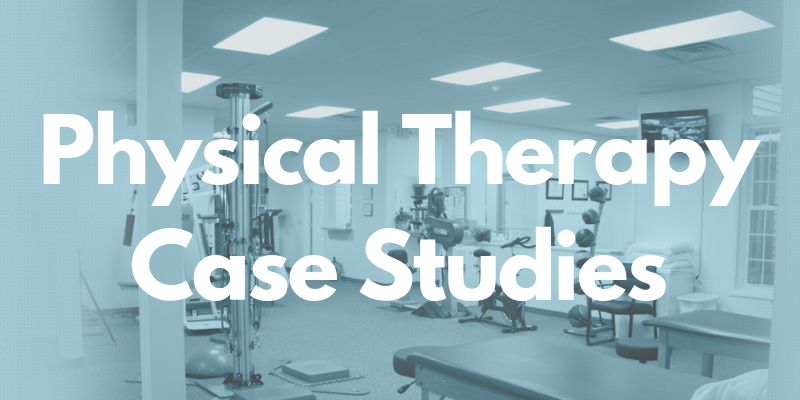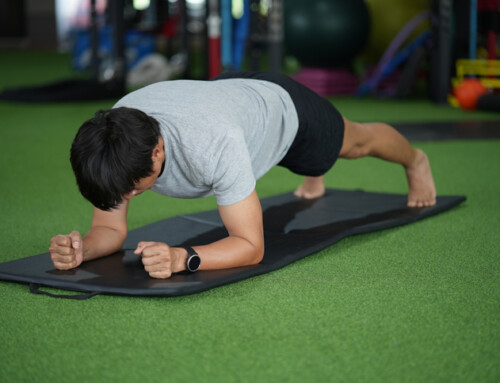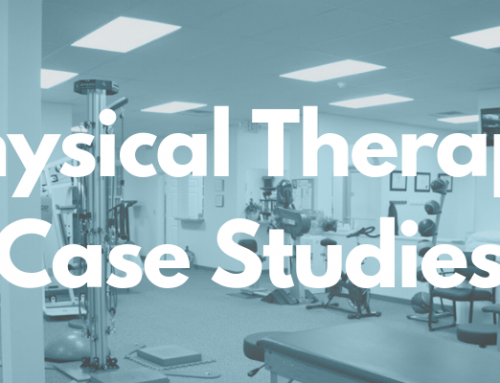by Jennifer Missenis, DPT
Physical Therapy for Urinary Incontinence
In this case study you will see how physical therapy for urinary incontinence can help someone to improve quality of life, confidence, and proper control of the pelvic floor muscles.
History
A 16 year old female presented to PT with symptoms of stress and urgency urinary incontinence. She also experienced constipation and reliance on weekly enemas to aide bowel movements. She had experienced these symptoms for several years without any mechanism of injury. She experienced mild urinary leakage when she laughed hard and sometimes when jumping. She also experienced a full bladder accident at least once per week where she would suddenly feel the urge to urinate but couldn’t get to the bathroom in time. These problems significantly impacted her confidence and willingness to participate in activities with her friends. She also experienced occasional generalized low back pain with prolonged sitting.
**Stress urinary incontinence is the inability to hold back urine (leaking or unintentional voiding) in the presence of increased intra-abdominal pressure, such as when laughing, coughing, sneezing, running, jumping, and lifting.
**Urgency urinary incontinence is the inability to sense the need to go to the bathroom until right before you go.
Evaluation
At the patient’s first visit, several objective measures were taken to determine what may be causing her impairments. This patient’s assessment included:
- Low back mobility and mechanics
- Lumbopelvic rhythm and body awareness (pelvic tilting, proprioception)
- Deep core strength and endurance (low back, transversus abdominis, obliques)
- Rib mobility, breathing mechanics, diaphragm engagement
- Functional movement patterns (i.e. squat, lunge, plank)
Findings
The patient displayed apical/chest breathing patterns with poor diaphragm engagement, impaired lumbopelvic body awareness and ability to dissociate her pelvic from her spine, compensations with attempts at deep core activation such as Valsalva maneuver or over-recruitment of superficial core muscles, as well as poor understanding of proper form with large and whole-body functional movement patterns.
Treatment
Due to the patient’s symptoms and notable coordination and recruitment deficits, it is determined that the start of her treatment should address relaxation of the pelvic floor, proper muscle activation (deep core, low back, abdominals, pelvic floor), and techniques to aide movement within the digestive tract.
Treatment on Day One: The patient was educated at length about breathing mechanics with proper usage of the diaphragm, reduced accessory muscle activation, and positioning for optimal recruitment. A daily bladder diary was started to track urinary and bowel activity. She was also educated on self-abdominal massage, proper pelvic floor contraction and relaxation strategies, and pelvic tilting awareness.
Early Treatments: Sessions focused on stretching of the gluteals, low back, and pelvic floor, review with education regarding her bladder diary and hydration, appropriate pelvic floor contraction and relaxation (various positions, visual aides, and intensities), core muscle recruitment, strengthening, and endurance, as well as trunk and ribcage mobility.
Later Treatments: Sessions progressed as tolerated and as progress was observed. The patient was able to work in motions such as rolling, chopping, pushing, pulling, lifting, transitions, crawling, yoga, planking, and bridging.
Discharge
The patient turned in four weeks of consecutive bladder diaries without any reports of leakage or accidents and with regular bowel movements without medication. She was able to perform basic and more complex core exercises without compensations and without pain. She also reported no back pain for four consecutive weeks.
Considerations
Many diagnoses that seem unrelated to the pelvic floor actually have a lot to do with this important sling of muscle. The pelvic floor is a hammock of muscular and connective tissue that requires a balance of strength, flexibility, and endurance. It is an important postural stabilizer, it supports pelvic organs, maintains proper bowel and bladder functioning, and aides healthy sexual function. It is a basic core muscle group and is often undertrained or trained incorrectly. Because it is part of the central hub of strength of the body, it can relate to back pain and dysfunction, SIJ dysfunction, hip and shoulder girdle impairments, and even distally into the extremities.
- Pelvic floor physical therapy can involve internal evaluation and treatment, but our clinic is able to treat many pelvic-related diagnoses externally. We do not specialize in the internal treatment approach at our clinic.
In this physical therapy case study, urinary incontinence in a patient is evaluated and treated using multiple techniques. For more information on this case study, or to make an appointment for an evaluation or treatment, contact us at one of our two physical therapy clinics at 518-289-5242 (Malta) or 518-289-5242 (Queensbury).





